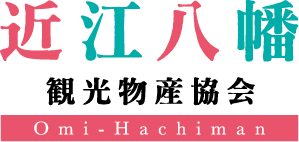Omi Merchants
Omi merchants were traveling traders from the province of Omi (now Shiga Prefecture) who made a name for themselves throughout Japan between the sixteenth and nineteenth centuries. They established enterprises in cities and towns far from home and built up a strong reputation for their shrewd business sense, hard work, and spirit of fair dealing. They also contributed to the modernization of the Japanese economy during the Meiji era (1868–1912), and many of the businesses they started developed into corporations that still operate today. The wealth they accumulated is reflected in the fine houses that line the streets of historic Omihachiman.
The success of the Omi merchants was in part due to the geographical location of their base. Omi was close to both the political capital of Kyoto and the commercial hub of Osaka. The province was also on the route of both the Nakasendo and the Tokaido highways, the two main routes connecting Edo (now Tokyo) with Kyoto. Trading is thought to have been relatively widely practiced in Omi from the twelfth century onward, but the Omi merchants’ rise to prominence truly began in the sixteenth century with the free-trade policies initiated by the warlord Oda Nobunaga (1534–1582). Nobunaga had Azuchi Castle built as his center of power in Omi in 1576 and established a town below it. To encourage merchants to settle in Azuchi, he allowed them to operate independently of existing guilds and with a significant degree of freedom, under a system called rakuichi-rakuza (“free markets, open guilds”). In 1582, Oda Nobunaga was killed and his castle at Azuchi destroyed. However, another warlord, Toyotomi Hidetsugu (1568–1595), had a new castle built on nearby Hachimanyama in 1585 and established the town of Hachiman (now Omihachiman) in the area below the castle. He invited the Azuchi merchants to settle in Hachiman and continued Nobunaga’s free-trade policies.
Ten years later, Hidetsugu was dead and his castle abandoned, but the free-trade system had spread throughout Omi Province and facilitated a commercial boom. Omi merchants, having prospered during these years, began to expand their activities into other regions. Merchants from different areas of Omi traded in goods specific to their area and were active in different regions. Hachiman merchants typically dealt in mosquito nets, tatami surface matting, and hemp cloth products. They were among the first to open stores in Edo (now Tokyo), anticipating that city’s emergence as the de facto capital of Japan in the early 1600s after the establishment of the Tokugawa shogunate. They also took part in the development of Ezo (now Hokkaido). Before the Tokugawa shogunate forbade foreign travel, some Hachiman merchants journeyed as far as Siam (now Thailand) and Annam (Vietnam).
The classic image of an Omi merchant is of a peddler wearing a conical hat and a long cape, carrying goods on a long pole balanced on his shoulders. Omi merchants began their business by traveling this way across Japan, selling their goods and establishing a regular market for their most popular products, which they would then procure to order. When they had saved enough money, they would open a permanent store, and the most successful merchants were able to set up networks of stores in the major cities.
An important factor in the Omi merchants’ success was their strong business ethic. As outsiders in the regions where they peddled their goods, they were often treated with suspicion. They also had to deal with the general prejudice against merchants, who in Edo society were placed at the bottom of the social hierarchy because they did not produce anything tangible. To overcome these obstacles, they built trust with honest business practices and gained local acceptance by actively encouraging industries in the areas where they traded. The Omi merchants were firm believers in hard work, thrift, and fair dealing, and adhered to various principles that reflected their business philosophy. These principles were passed on from one generation to the next and were seen as fundamental for the lasting success of a family business. One was “save and strive” (shimatsu shite kibaru) expressing the merchants’ belief that long-term business success depends on making the most of what you have and working hard. One of the best-known principles of the Omi merchants is summarized in the expression sanpo yoshi or “benefit for all three parties.” This means any business deal should be good for the seller, good for the buyer, and good for society at large.
The Omi merchants’ ethos of contributing to society is reflected in the concept of “hidden virtue and good deeds” (intoku zenji). For the merchants, it was important to share wealth for the benefit of society without seeking praise and publicity for such works. Their contributions to society therefore took the form of funding for public works such as the construction of schools, roads, and bridges, and donations to shrines and temples.


